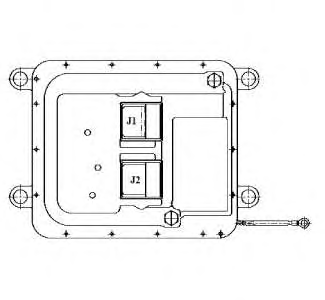For orders and details please call 726-999-0231
How Does a Caterpillar ECM Work?

Engine control modules are effectively the brains of your vehicles. ECMs control how much power engines generate, as well as how that power is distributed.
Consequently, just like your brain and body, caring for and attending to your vehicle’s ECM is essential to ensuring that it runs optimally. Keep reading to learn more about a popular kind of ECM: Caterpillar ECMs.
What is a Caterpillar ECM?
As discussed above, a Caterpillar ECM is an electronic unit that’s found in Caterpillar vehicles. Those vehicles include trucks and excavators. It monitors and controls various systems, such as your vehicle’s emission control system and sensors, to ensure that they’re functioning optimally.
If these systems aren’t functioning optimally, you’ll see a light on your vehicle’s instrument panel signifying the problem.
Sources of Caterpillar ECM Problems
Over time, wear-and-tear and other damage can hamper your ECM’s functionality. Here are some common causes of ECM problems:
- Engine Heat: You can find your Caterpillar ECM bolted to the cooler side of your vehicle’s engine. The average engine will operate between 195 to 220 degrees Fahrenheit.

However, temperatures can exceed this range if the demand on your engine is high. For example, an excavator’s engine will be hotter when excavating than while idling.
Even though your ECM is located on the cooler side of the engine, heat can still damage it.
- Worn Parts: An ECM gauges whether your vehicle’s parts are functioning optimally. However, “optimally” is a relative term.
For example, your ECM may be programmed with data on the optimal performance of new parts. As parts wear down, they can’t meet the criteria of optimal performance. However, worn down parts don’t necessarily mean they need to be replaced. Nevertheless, if your worn parts aren’t performing as well as the new parts, your ECM will continuously alert you to a “problem.”
- Oil and Water Damage: Your ECM is exposed to oil and water while you’re operating your vehicle. Since your ECM is an electronic unit, water and oil can damage it and cause it to malfunction. This kind of damage is typically apparent and easily identified.
Repair vs. Replacement
If you suspect your ECM is the source of your vehicular woes, you can opt for one of two solutions. Your initial effort should be to repair your ECM. This involves physical repairs and reprogramming your ECM. The latter is used to account for worn parts, whereas the former is used for physical damage from, for example, water. Repairing an ECM is a complicated and challenging process that’s best left to the professionals. If they can’t fix it, then replacement is the only alternative.
If your ECM is giving you trouble, get in touch with us at CATECM. We offer ECM repairs and Caterpillar ECM replacements throughout the United States. Contact us, and we’ll remedy your vehicular woes.

